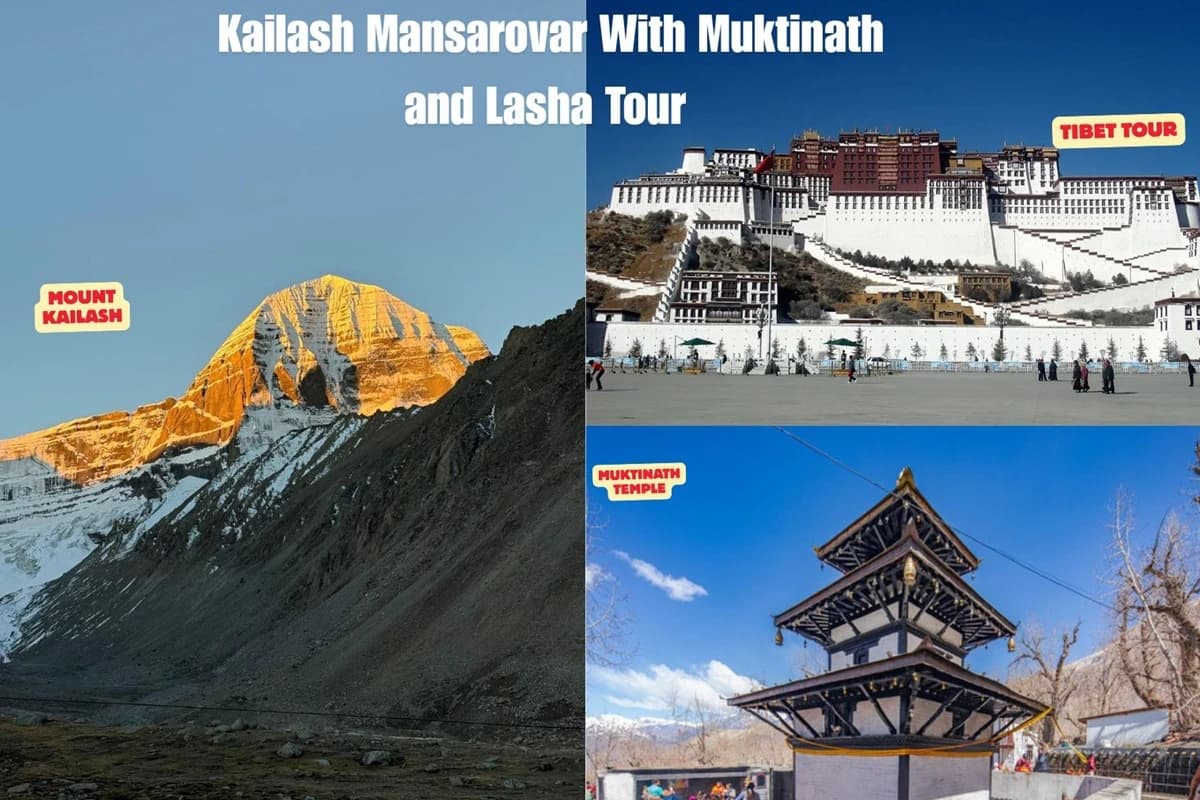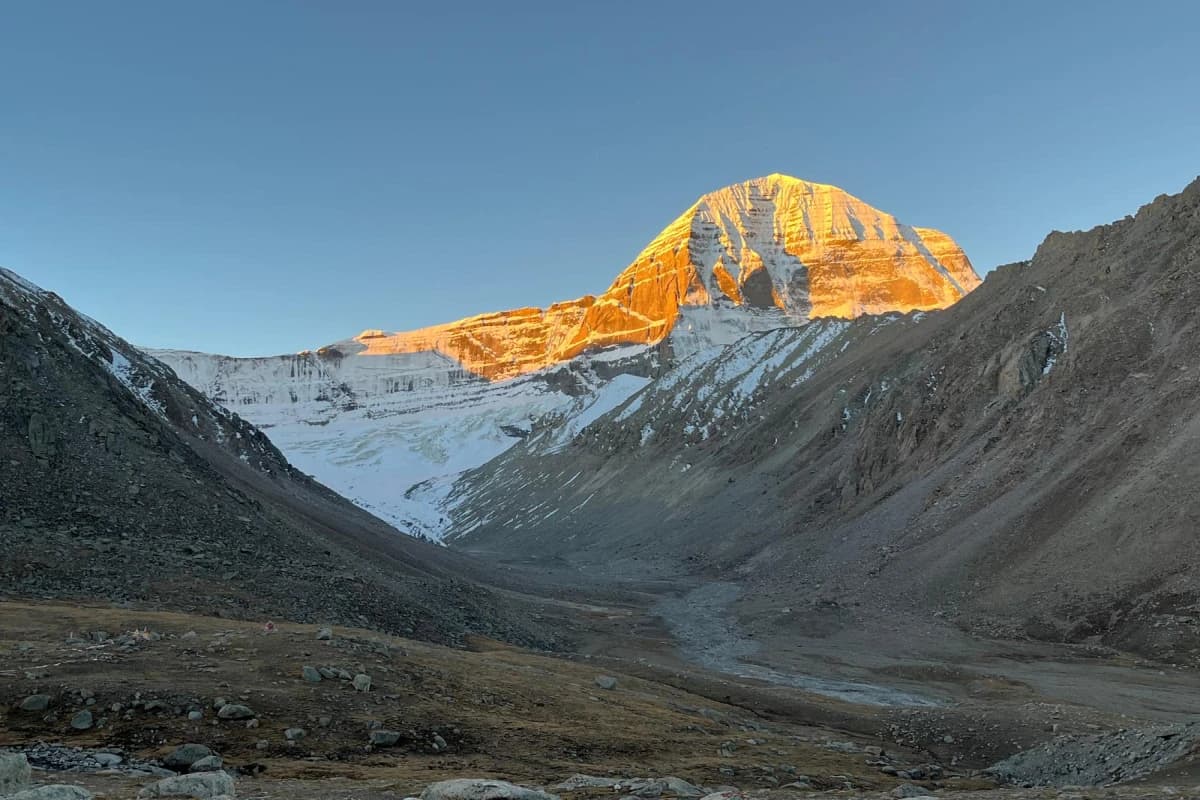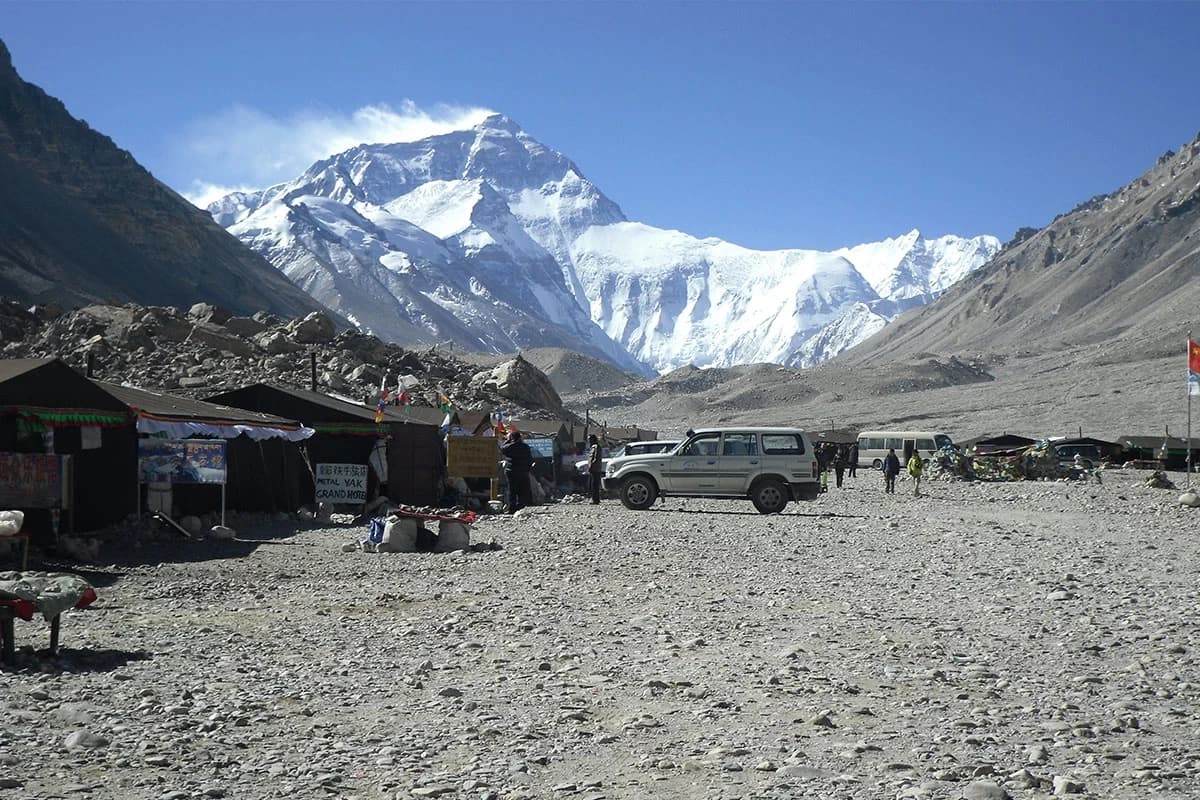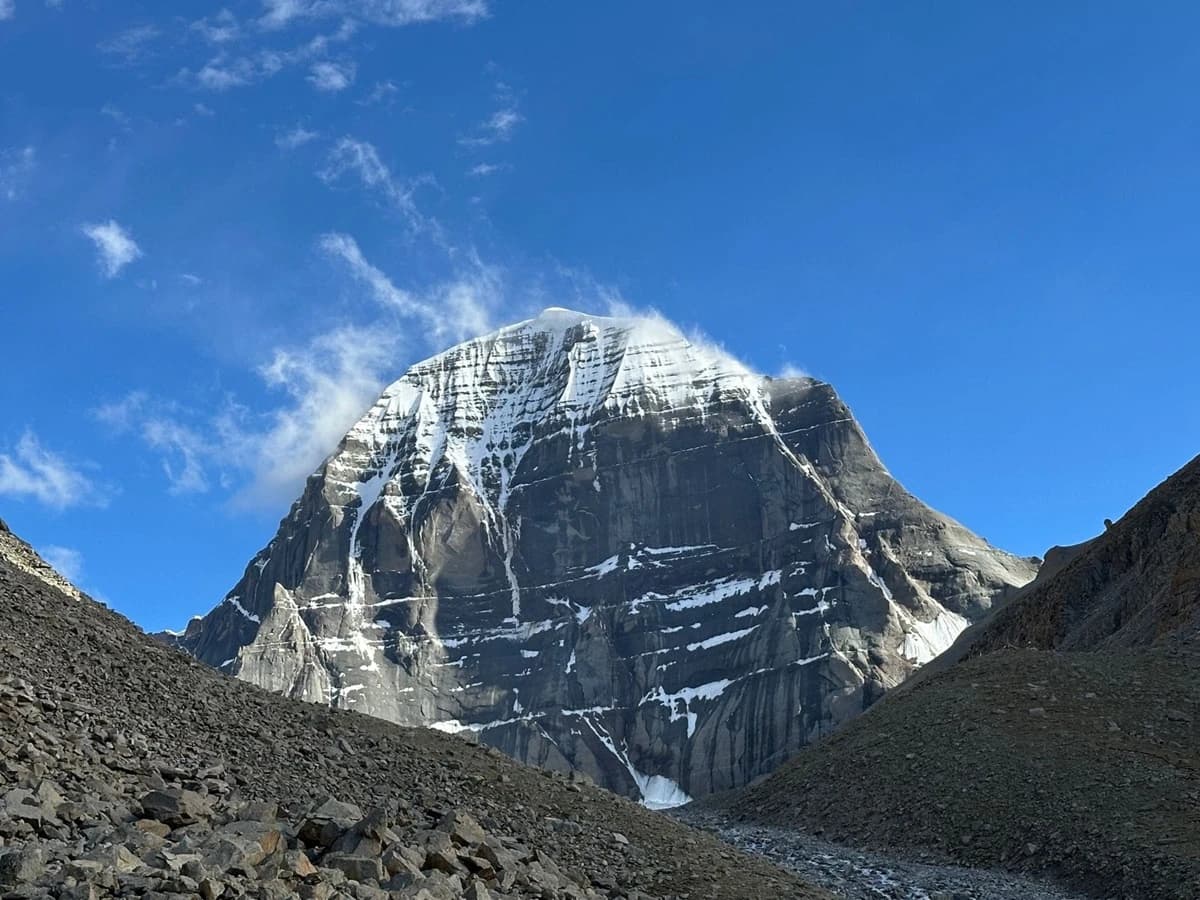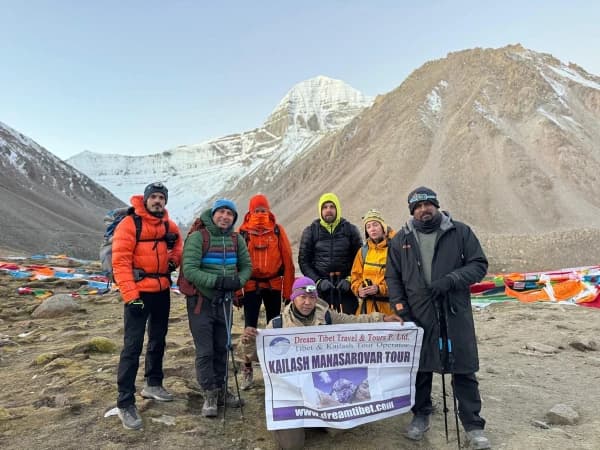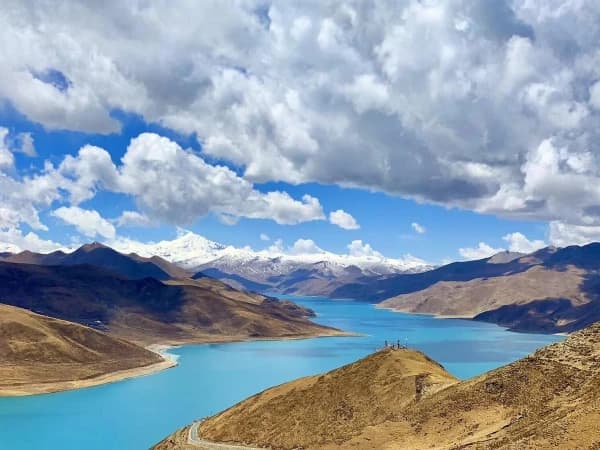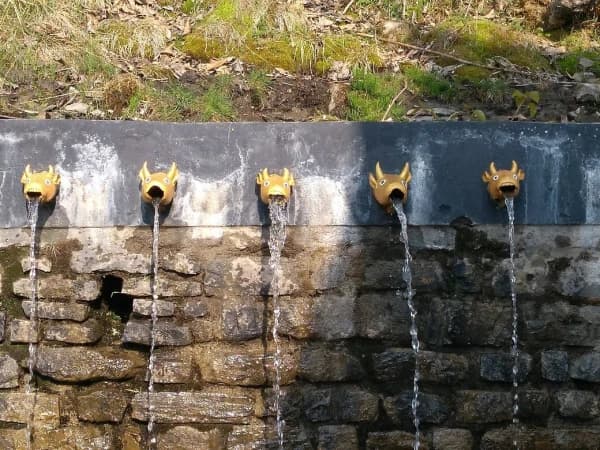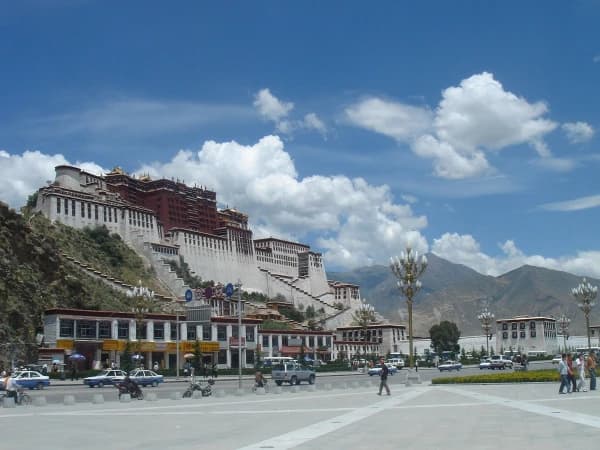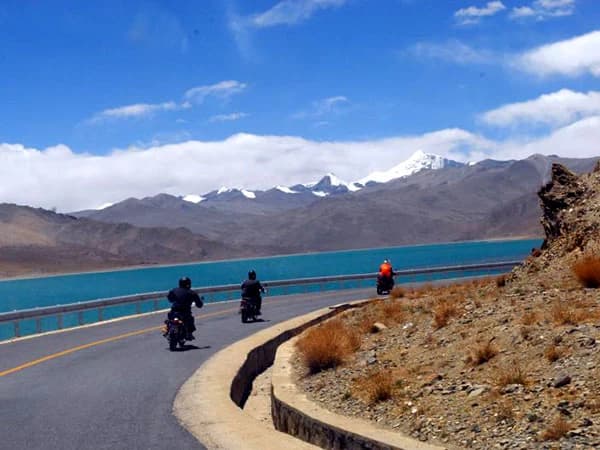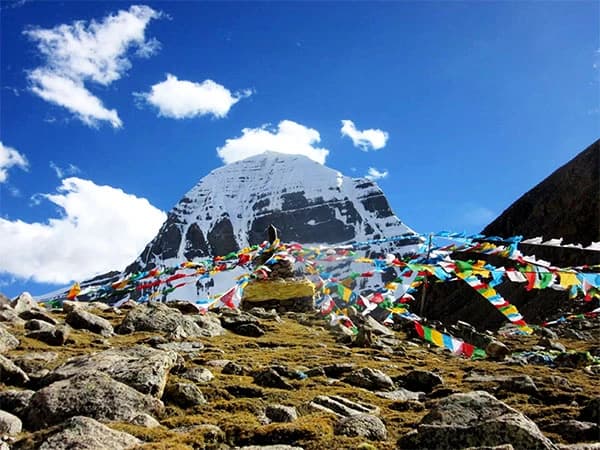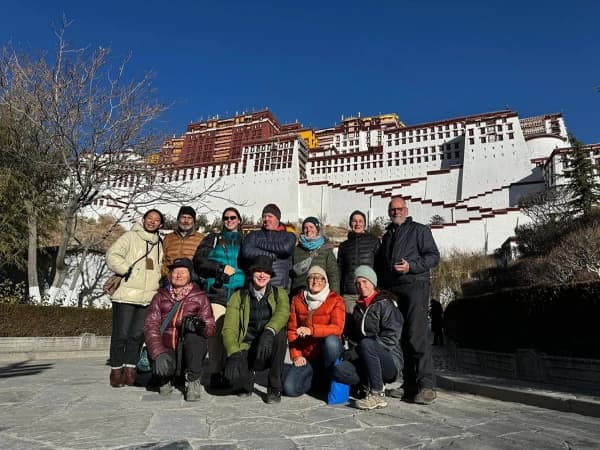Kailash Mansarovar Yatra With Muktinath and Lhasa Tour, is a 20 Day spiritual journey in Nepal and Tibet that goes to Mount Kailash. The journey starts in Kathmandu at Pashupatinath Temple. It then takes you to the sacred Muktinath Temple, before continuing to Lake Mansarovar and holy Mount Kailash for the sacred Parikrama.
The trip ends with cultural tours in Lhasa. These include visits to the Potala Palace and the Jokhang Temple. This way, we enjoy both a deep spiritual experience and beautiful culture.
Introduction to Kailash Mansarovar Yatra With Muktinath and Lhasa Tour
The Kailash Mansarovar Yatra Package including Muktinath and Lhasa Tour is a complete pilgrimage package. It connects some of the holiest Hindu and Buddhist pilgrimage sites in both Nepal and Tibet.
The kailash Mansarovar yatra With Muktinath Lasha packagetrip combines many legendary sites. They all start with the Pashupatinath Temple in Kathmandu. The journey continues to the Muktinath Temple in Mustang, then to Mansarovar Lake, and finally to the holy Mount Kailash.
It is also unique because it is all packaged into a complex itinerary of huge holy pilgrimage sites, combining them all into one big trip. And it is an advantage as a traveler because everything is conveniently planned, and you do not have to search out a bunch of other tours to get to different holy sites.
The Kailash Mansarovar tour with Lhasa, Pashupatinath, Muktinath journey begins in Kathmandu and includes time at sacred Hindu temples, including Pashupatinath. This is where pilgrims perform sacred rituals such as the Rudra Abhishek Puja. We will then travel to Pokhara and then Jomsom, where we will visit the Muktinath Temple with its 108 sacred water spouts.
It is said that this temple washes away all sins and gives salvation. Then we will cross into Tibet at the Kerung (Kyirong) border. The trip includes beautiful driving views as well as acclimatization stops. In Tibet, we visit Lhasa, including the Potala Palace, Jokhang temple, and Sera Monastery, which are all major centers of Tibetan cultural and Buddhist life. We will also visit Lake Mansarovar, which is considered to be holy and divine.
Pilgrims can bless themselves by offering spiritual rituals at the lake. The calling point of the Pashupatinath to Kailash Mansarovar via Muktinath and Lhasa is the Mount Kailash Parikrama, which is a pilgrimage circumambulation of Mount Kailash, which is considered sacred but arduous. Mount Kailash is thought to be the cosmic center of the planet in Hindu and Buddhist traditions.
This Complete Pashupatinath, Muktinath, Kailash Mansarovar & Lhasa Yatra itinerary combines religious places, cultural sites, and amazing nature such as the mountains and the Tibet plateau. It presents a complete Hindu pilgrimage with the inclusion of Muktinath and Pashupatinath visits in Nepal.
Later, the trip goes on with the Mount Kailash Yatra in Tibet. Therefore, it becomes a total immersion into the spiritual worlds of both Nepal and Tibet. Besides, the trip can be adjusted to suit one's likes and fitness. This low-cost Pashupatinath, Muktinath and Kailash Mansarovar Yatra With Lhasa Tour package covers pretty much everything and thus, a separate reservation is not needed.
We at Dream Tibet Travel and Tours have created a special Kailash Mansarovar Yatra itinerary. It includes the sacred Muktinath and Mount Kailash pilgrimage, created for all pilgrims. We are taking bookings now for both 2025 and 2026 departures. Book your pilgrimage today, and get our full support and help. We also organize this special tour for Indian pilgrims, making it hassle-free. So book today and prepare yourself for the divine journey of a lifetime.
Highlights of Pashupatinath Muktinath Kailash Mansarovar Lhasa Yatra
- Start with a meaningful pilgrimage to the Pashupatinath Temple located in Kathmandu. It is one of the holiest temples in Hinduism dedicated to Lord Pashupatinath (Shiva). The temple lies on the banks of the Bagmati River.
- Visit the ancient Muktinath Temple in Nepal - the sacred "lord of liberation" sacred for both religions at 3,800 m.
- After this, you will fly or travel to Lhasa, the capital of Tibet in China.
- Experience Tibetan culture and visit Potala Palace, Jokhang Temple, and Drepung and Sera Monasteries.
- Visit Lake Mansarovar - Where bathing in Lake Mansarovar is believed to monumentally relieve you from any past sins.
- Trek around Mount Kailash (Kora/Parikrama) - a spiritual circumambulation over 52 km and 3 days.
- Cross the Dolma La Pass (~5,600 m) - the highest point on the Kora and a killer climb.
- The Kora starts and ends at Darchen, and overnight stops are Dirapuk Monastery and Zuthulpuk Monastery.
- Explore the vibrant Barkhor market in Lhasa, the center of the spiritual and communal life, and the place to find great local textiles, jewelry, prayer beads, and crafts.
Kailash Mansarovar Yatra With Muktinath & Lasha Trip 20 Days 2026
In 2026, take our top 20-day Muktinath Lasha Kailash Mansarovar Yatra package. It offers the full experience from the time you land to your take-off. We also provide short-to-longer packages and a helicopter tour for people with time restrictions. These options aim to complete the pilgrimage quickly.
Since Tibet is now visa-free from 38 countries, travelers can start the tour straight away. They do not have to wait in Kathmandu. AMS is a major worry at high altitudes, so it is our focus.
In Muktinath Pashupatinath Kailash Lhasa spiritual journey 20 Days we have included trekking and driving routes in the journey. This ensures your safety, comfort, and that you are fully equipped to visit Mt. Kailash and Mansarovar.
About Muktinath Mandir

Muktinath Mandir is a holy shrine devoted to Lord Vishnu, situated in the Mustang district of Nepal. It is a common ground for Hindus as well as Buddhists. The temple stands as a symbol of religious harmony. Spirituality and 108 holy water spouts are the main reasons why the temple attracts people from around the world. These spouts are believed to give a bath to the evil deeds of the people.
Muktinath Temple altitude
Muktinath Temple is an isolated place among the Himalayas. It lies at the foot of the Thorong La Pass with an altitude of 3,710 meters (12,171 feet) above sea level.
Muktinath Temple location
The sacred spot is in the Mustang district of Nepal. It is the temple of the Annapurna Conservation Area. The site is about 22 km going upward from Jomsom town. It is almost totally surrounded by the amazing snow-capped Alps.
Pashupatinath Temple to Muktinath Temple distance
The distance separating Muktinath Temple in Mustang, Nepal, from Pashupatinath Temple in Kathmandu is around 370 kilometers by road. Usually, one takes a flight to Jomsom. From there, a jeep or a trek leads to Muktinath.
Flexible Itinerary for Muktinath Kailash Mansarovar Trip in 2025, 2026
Our Muktinath Kailash Mansarovar Tours for 2025 and 2026 consist of flexible itineraries. It will accommodate all pilgrims’ styles and paces. Pilgrims can depart from Kathmandu, Lhasa, Lucknow, or Nepalgunj. They can choose between overland and helicopter journeys. Every comfort will be provided.
For pilgrims coming from India or other neighboring countries, we have various options. These are arranged according to your preferences to make the pilgrimage easy and smooth. We have many flexible itinerary options for Lhasa and Kailash Mansarovar pilgrimage with Pashupatinath tour.
You can opt for a traditional overland road trip. Or it chooses the other option of a helicopter ride as a more efficient transportation route. All of our travel team will see to your safety while creating a well-planned spiritual pilgrimage.
North Everest Base Camp Visit
20 Days Complete Pashupatinath, Muktinath, Kailash Mansarovar & Lhasa Yatra includes a visit to North EBC too. The North Everest Base Camp in Tibet is a great opportunity to see Everest from a different vantage point and is not as busy as the southern route in Nepal.
Our trek to the North EBC includes spectacular views of Everest's north face that are some of the best for trekkers and outdoor adventurers.
Traveling this way, we'll also showcase Rongbuk Monastery, the highest monastery in the world. It plays a very spiritual role for pilgrims and has a stunning panoramic view of the whole Himalayan range. The involved monastery is a super relaxing place to learn more about Tibetan culture and Buddhist heritage.
Shree Muktinath Temple Short facts
|
Fact |
Detail |
|
Location |
Mustang, Nepal, altitude approx. 3,710 m |
|
Deity |
Lord Vishnu (Shaligram Shila form) |
|
Religious Importance |
Sacred to Hindus and Buddhists |
|
Architecture Style |
Pagoda style with 108 water spouts |
|
Water Feature |
108 brass water spouts (Mukti Dhara) |
|
Main Shrine |
Gold murti (idol) of Vishnu, human-sized |
|
Eternal Flame |
Jwala Mai Temple with natural gas flame |
|
Historical Date |
Present temple built around 1815 AD |
|
Pilgrimage Season |
April to November |
|
Significance |
Known as Mukti Kshetra, "place of liberation" |
|
Shared Worship |
Hindu god Vishnu and Buddhist Avalokiteśvara |
Mount Kailash Facts
|
Category |
Details |
|
Location |
Tibet, China |
|
Height |
6,638 meters (21,778 ft) |
|
Mountain Range |
Transhimalaya |
|
Religious Significance |
Sacred in Hinduism, Buddhism, Jainism, Bon |
|
Famous For |
Pilgrimage, Kailash Parikrama |
|
First Ascent |
Unclimbed (sacred mountain) |
|
Best Time to Visit |
May to September |
|
Nearby Lake |
Lake Manasarovar |
|
Climbers Allowed |
None (prohibited for climbing) |
Departure Points and Travel Flexibility
The Kailash Muktinath and Lhasa pilgrimage travel now all begins in Kathmandu. Many of you will travel to Kathmandu and have your spiritual journey from there.
Your travels will take you to sacred sites such as Muktinath, Pashupatinath, and other main pilgrimage sites on the way to Lhasa after you leave Kathmandu. There will also be locals who are able to leave from Pokhara or other cities in Nepal if they wish. They can also have further travel from those cities.
There will be the option of a private pilgrimage journey or a group pilgrimage journey. This can be chosen according to the individual or if their family or friends want to do the journey together.
This way, you will comfortably be able to do your pilgrimage on your own, without family or friends. At the same time, you will keep the pilgrimage aspect of your Kailash-Muktinath-Lhasa journey. You will also create a comfortable and individual pilgrimage experience for yourself.
What is the Distance from Muktinath Temple to Mount Kailash?
The journey from Muktinath Temple to Mount Kailash covers several stages. It moves from the holy heights of Muktinath to the enigmatic slopes of Mount Kailash. The distance as the crow flies is a rough estimate of about 538 km from the heart of Nepal (Kathmandu) to Mount Kailash. The distance from Mustang is either a bit shorter or almost the same.
The road distance from Kathmandu to Kailash is about 820 km, going through the Gyirong border. The distance of the road via Gyirong is around 120 km from Kathmandu to Gyirong, and then about 700 km to Kailash. Another distance is 930 km from Kathmandu to Mount Kailash via the Gyirong border road.
To be specific, the pilgrims take a drive from Muktinath to Jomsom/Pokhara to Kathmandu. They then cross the border at Gyirong and travel by jeep through Saga to Darchen, the Mount Kailash base.
Kailash Mansarovar Yatra With Muktinath and Lhasa Tour Cost 2025, 2026
There is no better deal for the price in our Kailash Mansarovar Yatra with Muktinath and Lhasa Tour. The tour is an exceptional value for the cost.
The length of the Nepal Tibet Kailash Mansarovar Yatra including Pashupatinath & Muktinath, including travel from Kathmandu, is generally about 20 days, as mentioned. Our price point is very competitive for the service and includes all permits, visas, and travel arrangements. For a group of 25 or more, the per-person cost is USD 2,750. For a private group of 10–16 people, the cost is USD 3,500.
Your Tibet Travel Permit is included in the package. We will complete all the official work to obtain the permits and passes needed to travel to Tibet. You do not need to worry about the paperwork.
For the Tibet Visa, we only require your original passport. We handle the application from start to finish. This gives you peace of mind and a completely organized Pashupatinath to Kailash Mansarovar via Muktinath and Lhasa journey from start to finish.
Kailash Muktinath & Lhasa Trip Fixed Departure Dates for 2026
We offer fixed departure dates for the Kailash Muktinath and Lhasa pilgrimage according to auspicious lunar calendar dates and festivals. However, those dates may change according to circumstances and government authorities.
Some special notes:
- Includes Kailash Kora (the kora around Mount Kailash) and Manasarovar Lake Kora (the kora around the holy lake).
- Some departures fall on special festivals, such as Saga Dawa and Full moon dates.
Mount Kailash Trip Departure Dates for 2026
|
Arrival in Kathmandu |
Visa Apply Date |
Departure Date |
Duration (Days) |
Event / Occasion |
Status |
|
20th April |
21st April |
26th April |
20 |
– |
Open |
|
11th May |
12th May |
16th May |
20 |
– |
Open |
|
19th May |
20th May |
25th May |
20 |
Saga Dawa Festival |
Open |
|
08th June |
09th June |
13th June |
20 |
– |
Open |
|
21st June |
22nd June |
26th June |
20 |
Full Moon |
Open |
|
06th July |
07th July |
11th July |
20 |
– |
Open |
|
20th July |
21st July |
25th July |
20 |
Full Moon |
Open |
|
17th July |
18th July |
22nd Aug |
20 |
– |
Open |
|
31st August |
01st Sept |
05th Sept |
20 |
– |
Open |
|
14th September |
15th Sept |
19th Sept |
20 |
– |
Open |
|
28th September |
29th Sept |
03rd Oct |
20 |
– |
Open |
|
18th October |
19th Oct |
23rd Oct |
20 |
Full Moon |
Open |
Rituals and Practices at Muktinath Temple and Mount Kailash

108 Sacred Water Spouts (Muktidhara)
The ritual 108 water spouts (Muktidhara) is probably one of the most famous rites. The pilgrims who come to Muktinath have to perform it. These waters, as it is said, are coming from the holy Gandaki River. They represent the sacred waters of the 108 holy rivers of India.
It is believed that taking a bath under these spouts of water frees the devotees from their sins. It purifies their souls.
Mukti Kunda and Pooja inside the Temple
After being bathed in the water spouts, a large number of pilgrims go to the Mukti Kunda. There they secure themselves and perform the Mukti Narayana Temple darshan and pooja. In the temple they see Lord Vishnu with the help of the temple attendants. They offer their prayers and request the appearance of the god. They do so for their needs and merits.
The Jwala Mai Temple and the Eternal Flame
The Jwala Mai Temple, from the place of the main shrine, is always a few minutes away. This is the place where an eternal flame is kept burning. It beautifully combines the elements of fire and water in nature's miracle of divine oneness. Pilgrims visiting this natural wonder do so as part of their spiritual journey. They offer their full honor to it.
The Kora (Circumambulation of Mount Kailash)
The Kora (also known as Parikrama) is a 52-kilometer circumambulation around Mount Kailash. It is at the core of the pilgrimage. The Kora is walked in about three days. Though the very taking a full-body prostration along the way may actually last for up to three weeks.
It is done in a clockwise direction by followers of Hinduism, Buddhists, and Jainism. The Bon adherents perform the circuit in the opposite direction. People who do it have the belief that it will result in their karmic impurities being wiped clean. They believe it gives spiritual renewal. They commemorate it as a metaphorical journey of life and death.
Charan Sparsha – "Touching the Feet" of Kailash
Even though it is not allowed to actually ascend or physically touch Mt. Kailash, a charan sparsha is possible. It is a symbolic act made at the base of the mountain near the Dirapuk Monastery. The act of receiving blessings during this rite is considered a very profound spiritual value.
Lake Mansarovar
Lake Mansarovar is holy or sacred. It is a body of water believed to have derived from a divine source. It is from Lord Brahma conceived in his mind. Pilgrims believe that bathing in the lake will remove their sins. It will set them on a path for enlightenment.
Annual Flag Changing Ceremony (Tarchen)
On the 15th day of the fourth Tibetan lunar month, large pilgrim gatherings will occur at Sershong. It is at the western base of Kailash. They come to participate in a festive gathering, a flag-changing ceremony (Tarchen). Flags will be changed and scarves offered with incense and prostrations. It is a joyous moment for many pilgrims.
